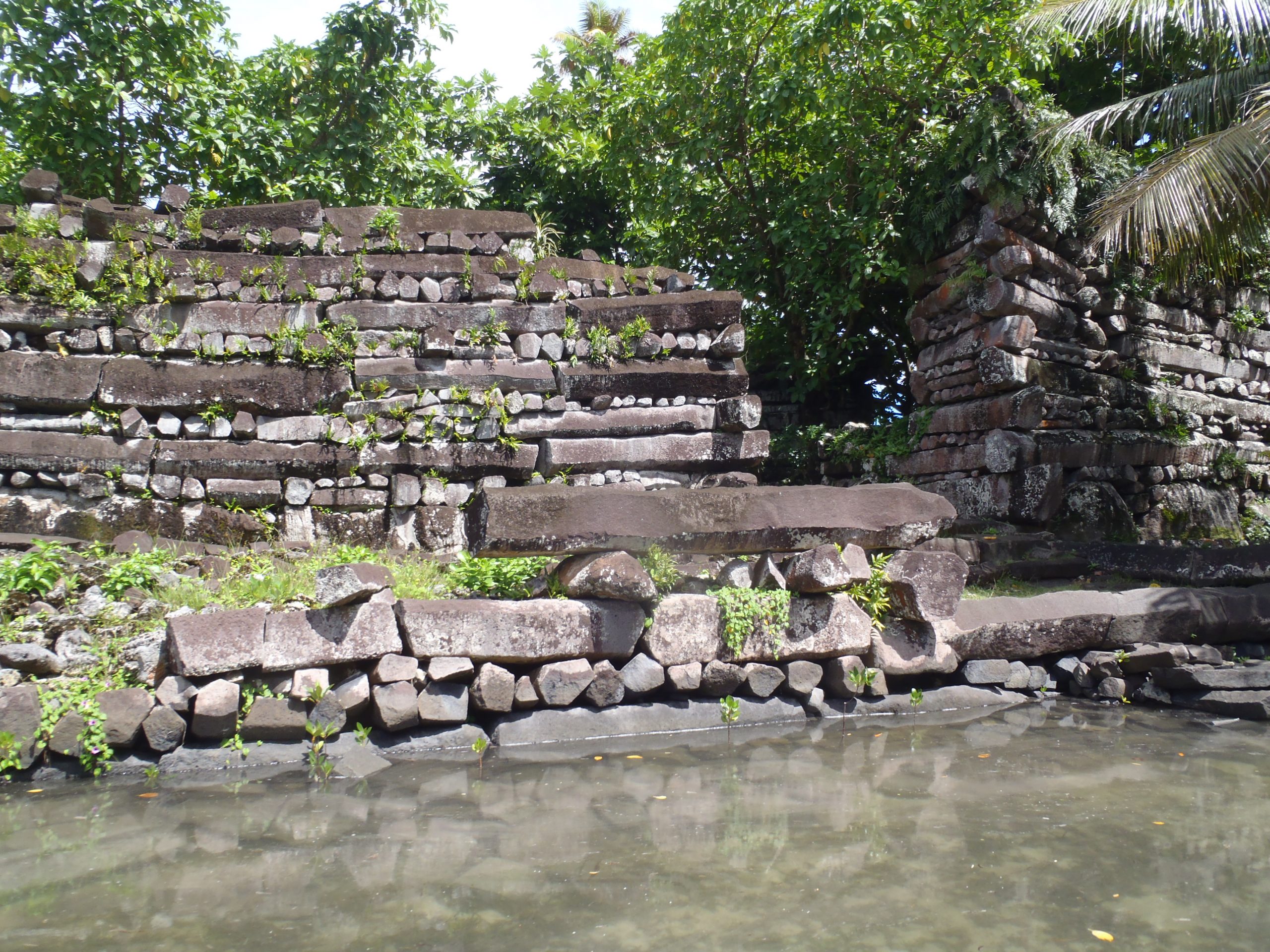Nan Madol

Often referred to as the last standing structure of the legendary island of Mu, Nan Madol is an astounding complex of 92 artificial islands connected by canals that were built on top of a coral reef.
Today, the abandoned structure lies partly submerged next to the shore of the island of Pohnpei.
The total weight of the basalt “logs” that make up the city’s construction is estimated at 750,000 metric tons, which results in an average of 1,850 tons moved each year for 400 years.
These are impossible numbers if we consider that everything was done by a civilization that didn’t have pulleys, levers, or metal to aid in the process.
As a matter of fact, the locals themselves describe the building of Nan Madol in a mythological way.
In The Book of Luelen, a collection of local myths translated into English, the author provides a specific list of seven men and women who built a large canoe and sailed forth from “the shores of a far-off land”, the mythical “Katau”.
Upon their arrival, they built the island and surrounded it with a barrier reef and a mangrove forest to protect it from the waves. Then they left, leaving just a man and a woman there.
After a long time, two sorcerers and brothers related to them returned and used a “large flying dragon” to levitate the countless 50-ton basalt stones that make up the complex.

They gave this new land the name Pei (“stone structure”) and named everything on top Pon. Thus, the name of this new land, Pohnpei, meant “upon a stone structure.”
It is evident that the locals couldn’t rationally explain how these stones were transported, but the same can be said about the scientists and archaeologists that studied the site.
In fact, the megaliths come all the way from a volcanic plug on the other side of the island, but the Micronesian people only built nothing more complex than rudimental huts and wooden bridges.
The first radiocarbon datings say that Nan Madol was already inhabited in 80 AD, although this doesn’t verify the age of the megalithic complex.

According to a local belief, Nan Madol had a harbor and used to be the place of an even older city, Soun Nan-leng (Reef of Heaven), and the recent finding of many boulders and pillars on the bottom of the ocean seems to confirm the background of this story.
The famous fantasy writer H.P.Lovecraft became so fascinated by these ruins that the description of the “cyclopic ruins” of the city of R’lyeh, in his tale “The Call of Cthulhu”, is based on Nan Madol.
As of today, Nan Madol is still a largely unsolved enigma.
